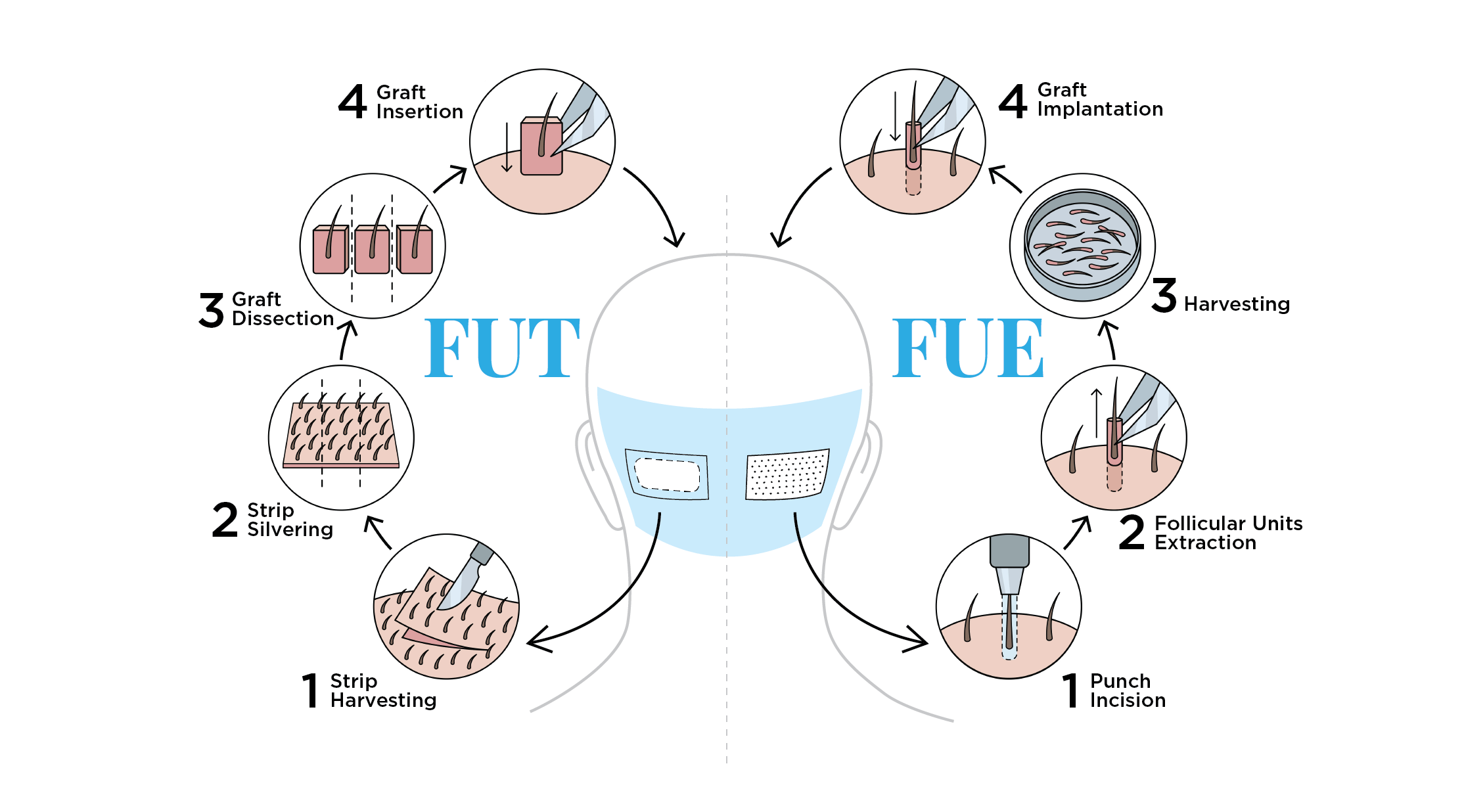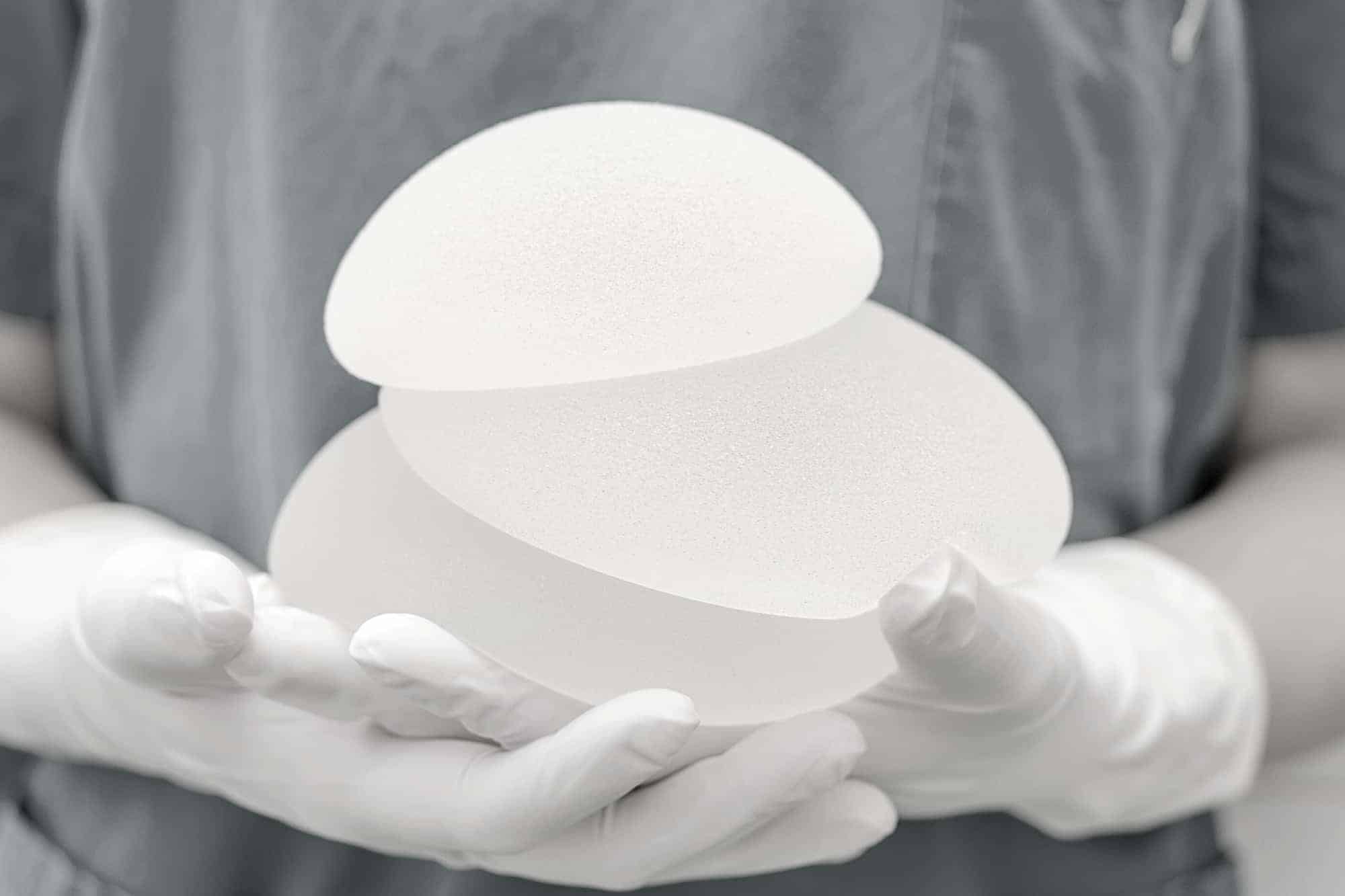August 4th, 2024
Dr. Mulholland, Md
FUE or FUT?
A hair transplant is performed to add hair to an area on your head where your hair may be thinning, or where you may be bald. Donor hair can be transplanted from parts of your head where your hair is thicker, or from other parts of your body. Hair transplant candidates may wish to have the procedure done because they are insecure about their lack of hair and to improve their overall appearance.
There are two types of hair transplants: follicular unit extraction (FUE) and follicular unit transplantation (FUT). A FUE procedure involves the individual extraction of hair follicles, which are then transplanted elsewhere on the scalp, while a FUT procedure involves removing a long strip of the scalp, separating the follicles, and then transplanting them.
The advantages and disadvantages of each procedure are largely dependent on the patient and their desired outcome, in addition to a number of other factors.
Do Hair Transplants Work?
Hair transplants are much more successful at treating hair loss than other non-surgical interventions, such as over-the-counter treatments. Patients can expect between 10% and 80% of transplanted hair to fully grow back within four months; however, it’s important to know that, like regular hair, the transplanted hair will thin over time.
While hair transplants are largely successful, there is no guarantee a transplant will be effective, and the success of the procedure depends on the patient. Individuals with dormant hair follicles may have less successful transplants, as may those with more widespread thinning and baldness, individuals who have experienced hair loss due to chemotherapy treatments, and those with very thick scars on their scalp.
What Is Follicular Unit Extraction (FUE)?
Follicular unit extraction, or FUE, is a type of hair transplant procedure that involves first shaving the back of your head. While the patient is under local anesthesia, individual hair follicles are harvested from the back of the head, and tiny incisions are placed in the scalp. The individual follicles that were removed from the back of the head are inserted into these incisions, and the surgical site is covered with gauze or bandages.
What Is Follicular Unit Transplantation (FUT)?
With follicular unit transplantation (FUT), a strip of the scalp is removed from the back of the patient’s head, and the area where the scalp was removed is closed with stitches. Next, the surgeon will separate the strip of scalp into smaller pieces with a scalpel, in order to isolate hair follicles. These smaller pieces are called grafts. A surgeon will sometimes separate the original strip of scalp into thousands of grafts, which will contain between one and four hair follicles.
Next, using a needle or blade and a microscope, the surgeon will make small holes in the scalp where the grafts are to be transplanted. Grafts are then inserted into these holes at the donor site, and the surgical site is covered with bandages or gauze. The entire procedure is performed under local anesthesia.
What's The Difference Between FUE and FUT?

The main difference between a FUE hair transplant and a FUT hair transplant is how the hair is extracted. With a FUT hair transplant, the removal of a strip of hair at the back of the head will result in a linear scar, whereas the extraction and transplantation of individual follicular units done during a FUE hair transplant results in far more minimal scarring overall — a scar resulting from an FUE transplant will look like a small dot. Many patients who have had a FUT hair transplant may wish to grow their hair longer, to cover linear scars.
FUT hair transplant generally takes less time than an FUE hair transplant, though this will depend on the patient, and the amount of hair being transplanted overall.
Which Type Of Hair Transplant Is Best For Me?
Whether you choose FUT hair transplant or FUE hair transplant will depend on several factors, which will be discussed in a consultation with your surgeon. Often, individuals who require a larger number of hair grafts due to more severely thinning hair are better candidates for a FUT procedure, as FUT grafts generally provide a greater yield of follicles for transplanting.
FUE transplants, on the other hand, might be better suited for those who only require a number of grafts or those who wish to return to their everyday activities shortly after their transplant, as the recovery time after an FUE procedure is often shorter, due to the procedure being less invasive.
Many patients who undergo hair restoration also explore facial rejuvenation treatments like a thread lift for a more youthful appearance or liposuction to define the jawline and neck area for a fully refreshed look. In some cases, clients choose to combine hair transplants with broader body contouring procedures like a Mommy Makeover or monsplasty to enhance overall confidence and appearance.
Your surgeon will consult with you to determine which procedure is right for your transplant needs, which will involve assessing the amount of grafts needed and the quality of the donor’s hair, and the amount of donor’s hair available.

Hair Transplant FAQ
Can the Same Person Have Both FUT and FUE?
Yes, the same person can have both surgeries. In some cases, FUT surgery may be performed first, meaning the scalp may become too tight to perform further FUT procedures. If this occurs, the surgeon can switch to FUE surgery for subsequent procedures.
How Long Do Surgical Hair Transplant Procedures Take?
FUT hair transplant procedures can take between four and 12 hours, while an FUE procedure can take up to 10 hours or more. Some patients will need to return to have their surgery completed on a second day.
Is There Any Scarring After A Hair Transplant?
Yes, there is scarring after a hair transplant. A FUT transplant results in a linear scar at the back of the head, where a strip of scalp is removed for grafting. An FUE transplant results in small, dot-like scars on the head where hair is removed and transplanted.


